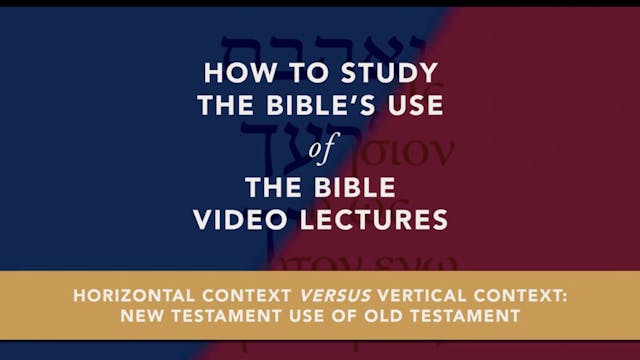S3.3: Exegetical Outcomes (7Choices)
How to Study the Bible's Use of the Bible (Gary E. Schnittjer & Matthew Harmon)
•
7m 14s
This session explains what an exegetical outcome is and highlights some common ones. Biblical examples appearing in this video—Exod. 13–18; 20:13; Num. 10; 20–21; Deut. 14:28; Amos 4:4; Matt. 5:21–22.
Up Next in How to Study the Bible's Use of the Bible (Gary E. Schnittjer & Matthew Harmon)
-
S4.1: Old Testament Use of Old Testam...
This session defines horizontal and vertical contexts and demonstrates their significance for studying the OT use of the OT. Biblical examples appearing in this video—Exod. 34:11–16; Num. 22–24; Deut. 7:3–4; 17:17; 23:3, 7; Joshua, Judges, 1–2 Samuel; 1 Kgs. 11:1–4; Neh. 13:23–27.
-
S4.2: New Testament Use of Old Testam...
This session demonstrates the significance of horizontal and vertical contexts for studying the NT use of the OT. Biblical examples appearing in this video—Exod. 23:20‒21; 33:14; Isa. 40:3; Jer. 16:16; Mal. 3:1; 4:5[3:23 H]; Mark 1:1‒3.
-
S4.3: Interpretive Blends (7Choices)
This session defines and illustrates the significance of interpretive blends for understanding the Bible’s use of the Bible. Biblical examples appearing in this video— Gen. 1:1; Lev. 18:27; Deut. 7:3 23:6; 2 Sam. 7; Ezra 9:10‒12; Ps. 2:7; Prov. 8:27; Isa. 42:1; 53; 56:7; Jer. 7:11; Mark 1:11; 11:16.



